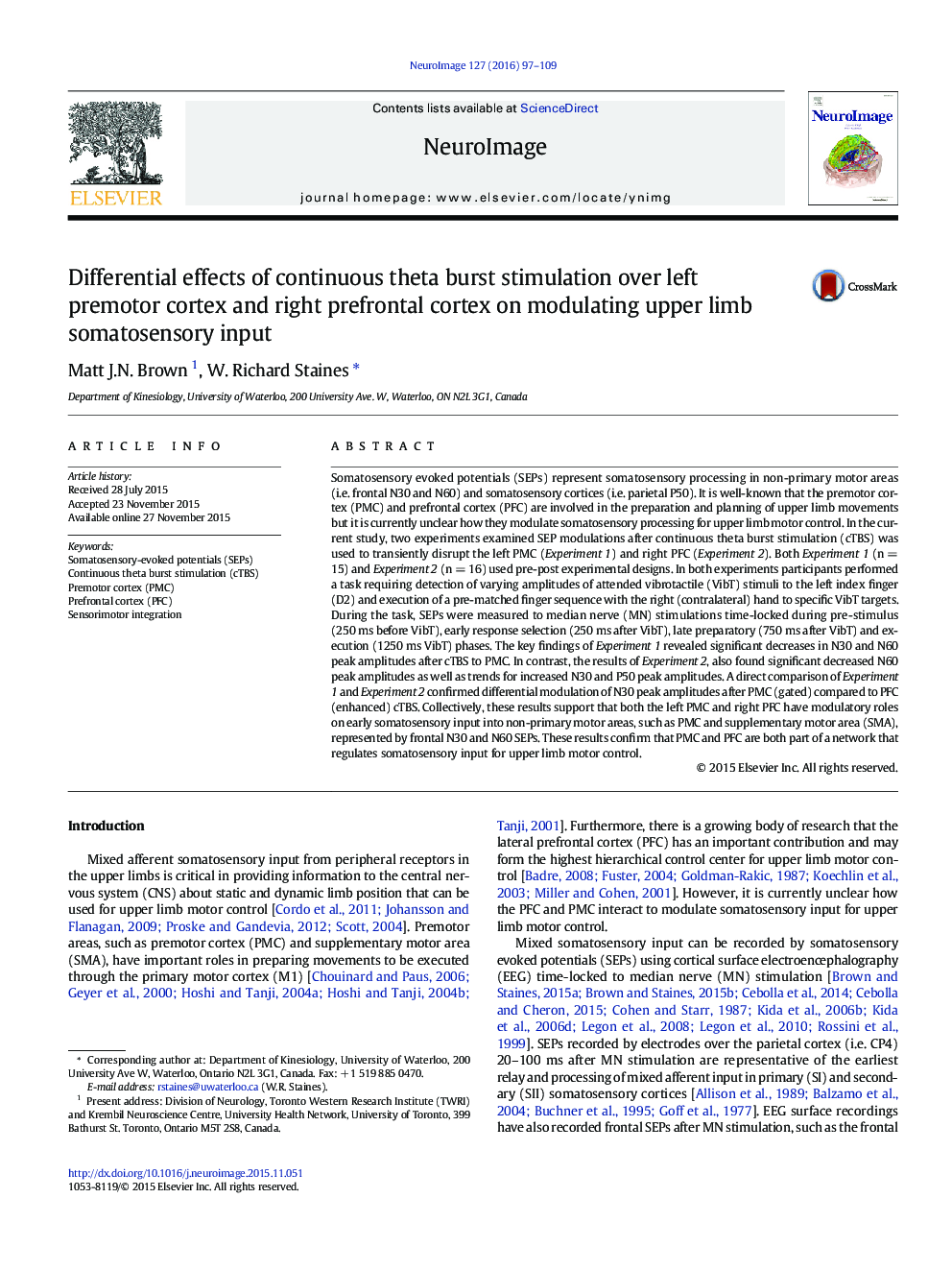| کد مقاله | کد نشریه | سال انتشار | مقاله انگلیسی | نسخه تمام متن |
|---|---|---|---|---|
| 6024544 | 1580881 | 2016 | 13 صفحه PDF | دانلود رایگان |

- Continuous theta burst stimulation (cTBS) to left PMC and right PFC modulate SEPs.
- SEPs from non-primary motor areas (N30) reduced after cTBS to left PMC.
- SEPs from non-primary motor areas (N30) enhanced after cTBS to right PFC.
- PMC and PFC are both part of a network that regulates somatosensory input for upper limb motor control.
Somatosensory evoked potentials (SEPs) represent somatosensory processing in non-primary motor areas (i.e. frontal N30 and N60) and somatosensory cortices (i.e. parietal P50). It is well-known that the premotor cortex (PMC) and prefrontal cortex (PFC) are involved in the preparation and planning of upper limb movements but it is currently unclear how they modulate somatosensory processing for upper limb motor control. In the current study, two experiments examined SEP modulations after continuous theta burst stimulation (cTBS) was used to transiently disrupt the left PMC (Experiment 1) and right PFC (Experiment 2). Both Experiment 1 (n = 15) and Experiment 2 (n = 16) used pre-post experimental designs. In both experiments participants performed a task requiring detection of varying amplitudes of attended vibrotactile (VibT) stimuli to the left index finger (D2) and execution of a pre-matched finger sequence with the right (contralateral) hand to specific VibT targets. During the task, SEPs were measured to median nerve (MN) stimulations time-locked during pre-stimulus (250 ms before VibT), early response selection (250 ms after VibT), late preparatory (750 ms after VibT) and execution (1250 ms VibT) phases. The key findings of Experiment 1 revealed significant decreases in N30 and N60 peak amplitudes after cTBS to PMC. In contrast, the results of Experiment 2, also found significant decreased N60 peak amplitudes as well as trends for increased N30 and P50 peak amplitudes. A direct comparison of Experiment 1 and Experiment 2 confirmed differential modulation of N30 peak amplitudes after PMC (gated) compared to PFC (enhanced) cTBS. Collectively, these results support that both the left PMC and right PFC have modulatory roles on early somatosensory input into non-primary motor areas, such as PMC and supplementary motor area (SMA), represented by frontal N30 and N60 SEPs. These results confirm that PMC and PFC are both part of a network that regulates somatosensory input for upper limb motor control.
Journal: NeuroImage - Volume 127, 15 February 2016, Pages 97-109